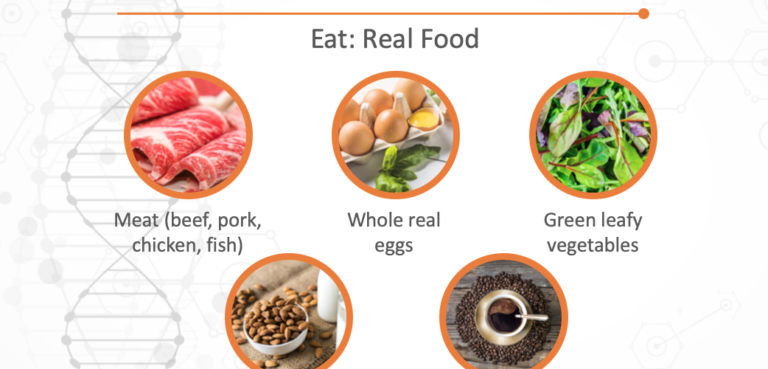There are some misconceptions about food and what to eat and not eat. The truth is that food is medicine and information for your body. Food is for real hunger, not boredom. Each patient is unique and any advice will need to be medically tailored.
Hara Hachi bu (腹八分目) is a Japanese phrase that translates to, “Eat until you are eight parts (out of ten) full” or “belly 80 percent full.” You can make simple changes in everyday habits to learn to eat until you are only 80 percent full.
First, eat more slowly. Eating faster results in eating more. Slow down to allow your body to respond to cues, which tell us we are no longer hungry. You should also focus on food. Turn off the TV and the computer. If you’re going to eat, just eat. You’ll eat more slowly, consume less, and savor the food more.
Second, use small dishes. Choose to eat on smaller plates and use tall, narrow glasses. You’re likely to eat significantly less without even thinking about it. Ten minutes before eating a meal, drink a large glass of cold water with lemon, and do so again 10 minutes after finishing a meal. Don’t snack, and don’t have anything in the house that you should not eat.
There are more steps you can take to make yourself healthier:
Step Step Step: Walk for 10 minutes after every time you eat or drink anything, even if it’s just water.
Step 1: Stop all vegetable oils — no canola, corn, soybean oil, Crisco, or margarine. Vegetable oils are also called industrial seed oils and were originally industrial waste products. Look at all food labels, and do not eat food with any vegetable oils listed. Do not use any spray-on oil. Instead, eat healthy oils and fats such as olive oil, coconut oil, butter, avocado, and duck fat.
Step 2: Eliminate all sugars and artificial sweeteners, or anything that is sweet on your tongue. Eliminate all refined sugars (juices, soda, diet soda, candy, chips).
Step 3: Sleep well and get at least 7 hours of uninterrupted sleep every night. Do not use your TV, phone, or computer in bed.
Step 4: Supplement with 4-6 grams of Krill or Fish Oil per day. Consider adding minerals like magnesium and salts as well. Ketone supplements may also play a role.
Step 5: Decide if you need a Cleanse Protocol or the Live Health Protocol. The purpose of either is NO vegetable oils, NO refined carbohydrates, and getting restorative sleep.
Cleanse Protocol: If you are starting out and are uncertain if specific foods may be contributing to your inflammation, or if you have weight to lose and are stuck, the cleanse protocol may be appropriate. You should only eat twice a day. During this time, you can eat as much beef, chicken, or fish as you like, and you can add butter and spices. That’s it for the next 4 weeks, then re-add one item per week that you might be sensitive to, as long as it still fits under the Live Health Protocol. Drink only water.
Live Health Protocol: This protocol helps you to live healthily and reduce your pain and inflammation. You should eat real food, such as meat (beef, pork, chicken, and fish), whole real eggs, green leafy vegetables, and seeds and tree nuts (almonds, macadamia). Drink only water, coffee, and unsweetened tea.
- Don’t eat fake industrial foods, carbohydrates or sugars (grains, cereals, grits, oatmeal, rice, rice cakes, pasta, potatoes, bread), fruits, or nuts from the soil (peanuts, cashews). Don’t drink soda, juice, diet soda, or creamers in coffee.
Bonus points:
Eat one to two tbsp of psyllium fiber dissolved in warm water 30 minutes before bed.
The ultimate health supplement is to skip one meal per day and eat only twice a day, in a short 6 to 8-hour feeding window.
No caffeine after 3 p.m.
Am I on the right track?
Some patients need immediate feedback, and this can be done by measuring ketones as a marker of fat loss.
Don’t make this complicated. Eat the same thing every day for the first few weeks, and choose between 4-5 different meals. You should feel full after the meal. Don’t snack. It’s a process that will take a few weeks to learn.
Don’t think of this as not having something, look at what you can have and eat until you are satisfied.
The more vegetable oil and sugar you eat, the worse your pain and inflammation will be. You may have to increase your salt intake if you feel fatigued or get muscle cramps. Medications may have to be adjusted.
It’s about reducing your sugar intake and increasing protein and healthy fats, and the rest will take care of itself.
It’s a way of living, not a diet. This is a process: you will fail a few times, but each time you fail you learn. Don’t try, just do.
For more information






